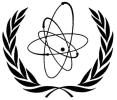Chernobyl, Ukraine (1986)
INES listed the famous Chernobyl disaster as the worst nuclear disaster (of level 7: major accident) ever in the history of mankind to occur and it happened in 1986. Despite the fact that it should have followed all the necessary measures and adopted the appropriate safety culture, explosion followed by large discharge of radioactive contamination due to improper handling of the device coupled with design failures. The Chernobyl power plant is located on the border area between Ukraine and Belarus and it is stated the explosion of the reactor released 100 times more radiation than the atom bombs dropped on Hiroshima and Nagasaki . Chernobyl disaster occurred during a low-power engineering test of the Unit 4 Reactor. Safety systems had been switched off and improper, unstable operation of the reactor allowed an uncontrollable power surge to occur. That resulted in successive steam explosions that severely damaged the reactor building and completely destroyed the reactor. Upon that, the large discharge of radioactive contamination followed suit, changing the lives of about 400000 people forever and the impression on nuclear power plant. Chernobyl disaster is a wake-up call where higher authorities related to nuclear industry, be it INES or IAEA will definitely improvise and enhance the already available safety culture. If it never failed, it would have never given way to development of the industry. When flaws are encountered, they can be rectified and the next time, the design will not fail for the same reason.
Chernobyl Nuclear Disaster
Three Mile Island, United States (1979)
The United States’ most disastrous nuclear accident took place at the Three Mile Island Plant near Harrisburg, Penn., the state’s capitol. It all began with a simple plumbing break down. A small valve opened to relieve pressure in the reactor, but it malfunctioned and failed to close. This caused cooling water to drain, and the core began to overheat. The machines monitoring conditions inside the nuclear core provided false information, so plant operators shut down the very emergency water that would have cooled the nuclear core and solved the problem. The core began to overheat, and reached 4,300 degrees Fahrenheit. The water nearly reached the fuel rods, which would have caused a full meltdown of the core. But the nuclear plant’s designers were finally able to reach the plant operators several hours later to instruct them to turn the water back on, and conditions stabilized. The NRC determined that no one had died of causes related to the incident at Three Mile Island, but found there might be one excessive cancer death over a 30-year period as a result of radiation. Three Mile Island had a profound impact on the public’s attitude toward nuclear energy. In the 30 years since Three Mile Island, not a single nuclear power plant has been approved for development.
3 Mile Island Nuclear Disaster
Fukushima Daiichi Nuclear Power Plant, Japan (2011)
IAEA Fact-Finding Team completed a preliminary assessment of the safety issues linked with TEPCO’s Fukushima Daiichi Nuclear Power Station accident following the Great East Japan Earthquake and Tsunami on March 11. In the draft report, it said the biggest problems are the tsunami hazard for several sites was underestimated. Nuclear plant designers and operators should appropriately evaluate and protect against the risks of all natural hazards, and should periodically update those assessments and assessment methodologies. Officials already have concluded that the plant was not designed to withstand the 40-foot tsunami that hit it on March 11. But it is also likely that workers at the plant could have reduced the severity of the accident if they had made different decisions during the crisis. Some of the institutional issues have already emerged. Japan’s own preliminary investigation showed disagreement and confusion over who should be calling the shots. Barrett says this was partly cultural.
Fukushima Nuclear Disaster
If you notice that it took 25 years for a disaster of such big scale in comparison to Chernobyl to happen. This is the evidence of concrete improvisations being made to nuclear safety culture to adapt well, along with the natural disasters. What happened in Fukushima is a wake-up call to continue improvising the safety enhancements for a better environment. However, the media has been exaggerating the event to instill fear in us A lesson to keep in mind is the accident but to ignore the steady increase of demand in power, that is irresponsible too. Opting out for other options in generating power has been one of the ever debated issues in organizations such as. However, if the sources are not compromised, can the demand be satisfied in 2050? People demand innovation, innovation needs energy, yet at the same time, being narrow mindedness when it comes to scaling into, be it renewable (wind, solar or hydro) or nuclear in our case is not helping the situation. Nuclear energy can offer a solution but is not the only option available for a greener environment.




